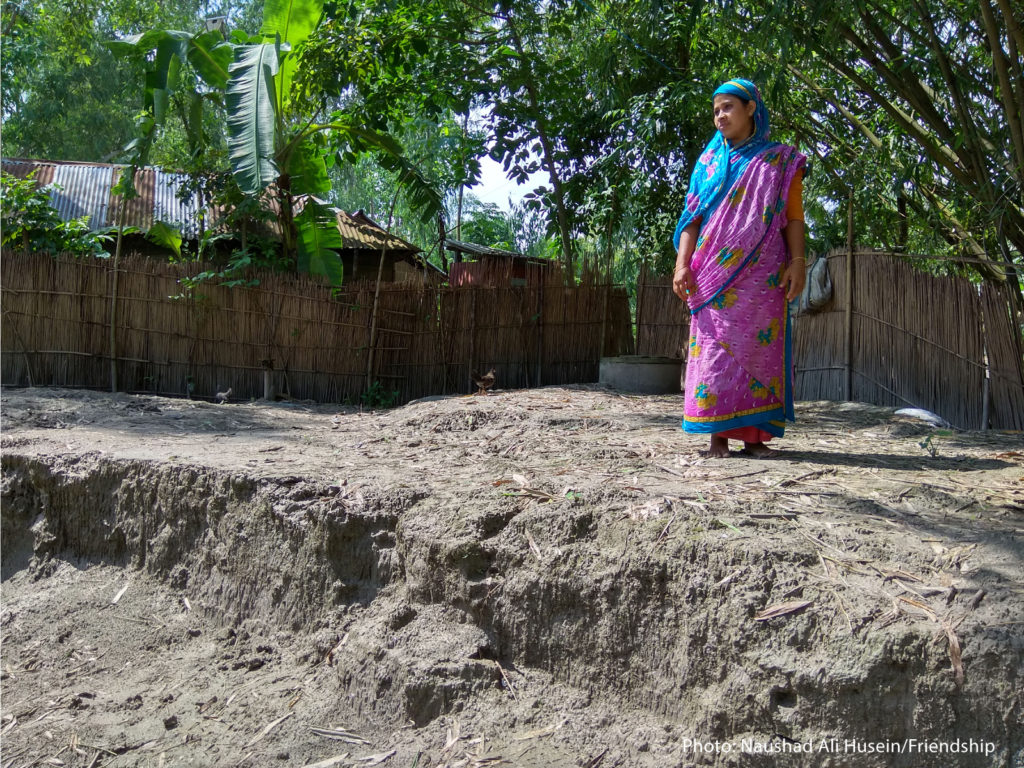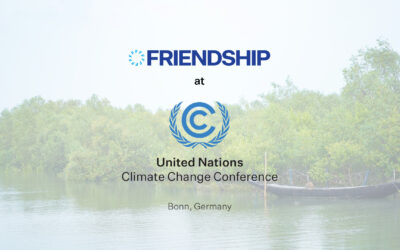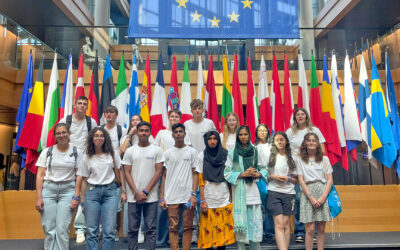Young volunteer rescuers spring into action during climate disasters

by Naushad Ali Husein
November 21, 2019
Shahjadi Begum woke up at 1 a.m. to find the river roaring through her veranda.
Before going to sleep, she had organised her things so that she could easily move out if she had to. But now there was no time to move anything. The ferocity of the river’s current had taken her by surprise. Pillars and walls were already beginning to cave in.
Desperate, she called the nearest disaster volunteer, Meher Zaman. He swam across and helped move her to an adjacent house which was on higher ground. With another member of his team, he tried to salvage what he could of Shahjadi’s possessions.
“We saved the roof of the house, a few pillars, and dismantled the tube well,” he says.
Everything else was doomed. Within an hour, Shahjadi recalls, there was no trace of her home. “Luckily I had left my infant daughter at my mother-in-law’s house, or else she might have perished that night.”
Shahjadi’s village, Sardarpara, is part of the river. This landscape is known as the ‘char,’ made up of sand banks deposited by the river.
Within an hour, there was no trace of her home.
Every year between July and September, the river swells dangerously. Within the river, and outside the protection of embankments, the char areas are particularly vulnerable to floods and other natural disasters. Once every few years, an especially terrible flood wreaks havoc there.
2019 was such a year. More generally, 2019 has been a year of intensifying climate disasters, and a harrowing one if seen as an indication of things to come. Last week some 26 people died and hundreds of thousands – or millions, according to some estimates – were evacuated in the second catastrophic storm to hit Bangladesh this year.
A decade ago, Friendship began to organize local communities in vulnerable areas to build their resilience to climate crises.
Each of the 40 villages on the chars and in coastal areas where Friendship’s Community Initiated Disaster Risk Reduction program is active has a Friendship Disaster Management Committee (FDMC), composed of mostly women, and a few men, from a cross-section of socioeconomic backgrounds.
Before disaster strikes, the committee maps the most vulnerable households, including low-lying ones, and those with elderly, sick or disabled residents. The committee also identifies shelters or other kinds of safe places where people can be moved to.
Each of these villages also has a team of Friendship Disaster Volunteers like Meher. They are instructed on what to do during a crisis, who to call, and how to conduct search and rescue operations. During this flood, volunteers worked in teams of ten—five men and five women—to rescue people and their possessions.
Nineteen-year-old Molida rescued 45 people on a raft made of banana trees.
“My husband and I both completely panicked,” says Shahjadi. “If Meher Zaman had not come by, I don’t know what would have happened.”
Nineteen-year-old volunteer Molida, in Goynar Potol Char, was spurred to action when she realised children and sick and disabled people in her area were in danger. She rescued 45 vulnerable people on a raft made of banana trees.
As a trained member of the volunteer team, she knew what she was supposed to do, says Molida. She never hesitated, even though a woman would never have been expected to do what she did.
Disaster volunteers weren’t the only heroes. Villagers with crucial resources joined in to help their neighbours. Farmer Mohammed Shawkaruddin was able to salvage his crops by prematurely harvesting his paddy fields with his boats. When the flood got worse, he used his boats to rescue people in danger, sacrificing his livestock.

There are 15 boats in the village, says Meher, and every last one was being used to ferry endangered people and their possessions to safety. During a crisis it doesn’t matter who the boat belongs to. Over centuries of dealing with such disasters, people have learnt to value community needs over individual interests.
Dry land was another key resource. Every home that remained above water during the flood hosted at least four to five evacuated families. Shahjadi, who sought shelter in her neighbour’s house, says that, “For two nights, they barely had enough space to lie down.”
Rehana Begum, a member of the Friendship Disaster Management Committee in her village, Notorkandi, hosted several families in her home. This time of the year, everyone makes certain preparations for flooding, she said. They had stocked up on dry food and stove fuel—some even brought portable mud stoves with them. Those with less at their disposal were helped by others.
As Shahjadi Begum recalls the flood, she is seated in front of a new home. This one has prefabricated concrete pillars. It’s sturdier than her old house, but a few strong people with spanners can dismantle it within minutes, and load it onto a boat.
The new home has left her with a debt that Shahjadi and her husband will struggle to pay off. But she now has a base, and is a little better prepared for the struggles she faces.



